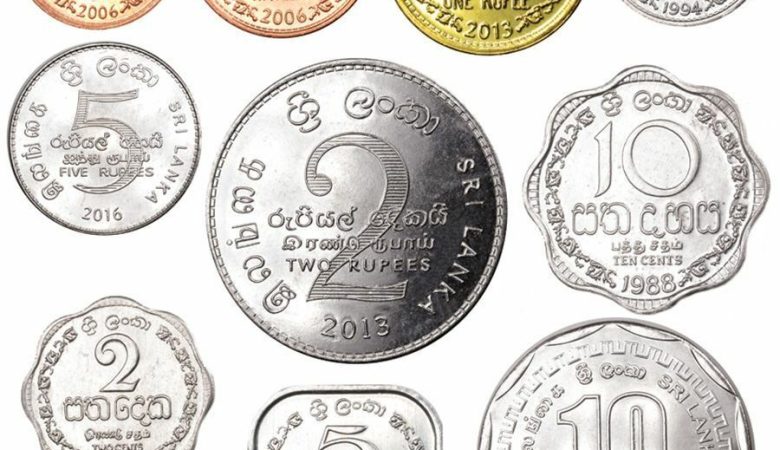Introduction:
Sri Lanka’s rich history, spanning more than two millennia, is reflected in its numismatic heritage, which represents the political, economic, and cultural development of the country. Sri Lanka’s coins are physical reminders of the island’s history, with each one narrating a different tale of commerce, conquest, and the entwining strands of many civilizations. This article explores the cultural tapestry and historical relevance of Sri Lankan coins, delving into their intriguing universe.
Ancient Numismatic Treasures:
The history of Sri Lanka’s coinage begins in antiquity, when several kingdoms struck coins to promote commerce and assert their dominance. The Anuradhapura era, in the third century BCE, is when the oldest coins discovered in Sri Lanka were made. These ancient coins, which were frequently composed of copper or silver, show Buddhist iconography and are inscribed in Brahmi writing, indicating the strong religious and cultural influences that characterized ancient Sri Lanka.
The Roman Connection:
The coinage of Sri Lanka bears the permanent imprint of its trading relations with the Roman Empire in the first century of the common era. Throughout the island, Roman coins, especially those of Emperor Augustus and other emperors, have been found during archaeological digs. This fascinating numismatic meeting point of Roman and Sri Lankan civilizations emphasizes the island’s significance as a center of ancient commerce.
Medieval Splendors:
Numerous dynasties, including the Cholas and Pandyan Kingdoms, left their numismatic marks on the island as Sri Lanka entered the medieval era. Sri Lanka’s medieval coins are renowned for their elaborate designs, which frequently include images of gods and kings as well as text written in Tamil or Sinhala. These coins offer important light on the political climate and blending of cultures that defined medieval Sri Lanka.
The Arrival of the Europeans:
European powers began to arrive in Sri Lanka in the 16th century, especially the Portuguese, Dutch, and British, all of whom left their stamp on the country’s currency. The Dutch East India Company produced coins with the Dutch insignia, whereas the Portuguese released coins with the Portuguese coat of arms. The Ceylonese rupee was first introduced in 1825, during the British era, signaling the start of the shift to a unified currency system.


British Colonial Era:
The evolution of Sri Lanka’s currency was greatly affected by the British colonial period. Coins were produced in denominations that represented the prevailing economic demands of the period, and the Ceylonese rupee was designated as the national currency. To demonstrate the island’s inclusion into the world economy, the British created a range of currencies, including as the gold sovereign, copper coins, and silver rupee.
Independence and Modern Era:
1948 saw Sri Lanka declare its independence, ushering in a new era in its numismatic history. Established in 1950, the Central Bank of Ceylon (later renamed the Central Bank of Sri Lanka) assumed exclusive control over the issue of currency. The Sri Lankan rupee was become the national currency when the country switched to the decimal system in 1963. Sri Lanka’s post-independence identity is reflected in the national emblems, cultural motifs, and historical characters seen on contemporary coinage.
Commemorative Coins:
Sri Lanka produces commemorative coins to mark important occasions, anniversaries, and cultural legacies in addition to ordinary circulation coins. These coins are highly sought-after collector’s goods because they frequently have beautiful designs, rare metals, and restricted mintages. Commemorative coins are physical symbols of pride in the country and a way to remember the past in addition to being a kind of money.
Preserving Heritage Through Numismatics:
Sri Lanka has taken action to protect and promote its numismatic legacy because it acknowledges its significance in both culture and history. With its vast collection of historical coins, the Colombo National Museum offers tourists a window into the rich history of the island’s coinage. Furthermore, fresh findings from continuing archaeological digs deepen our knowledge of the historical and commercial exchanges in Sri Lanka.
The Role of Numismatics in Education:
Future generations’ education and the preservation of Sri Lanka’s history are greatly aided by numismatics, the study and collecting of coins. Collaborating to interpret inscriptions, examine designs, and track the circulation patterns of coins, coin aficionados, historians, and archaeologists uncover important details about the island’s centuries-long economic and cultural interactions.


Conclusion: A Tapestry of Time and Tradition:
In summary, Sri Lanka’s coinage creates an enthralling mosaic that interweaves the histories of ancient civilizations, mediaeval kingdoms, colonial influences, and the island nation’s struggle for freedom. Every coin narrates a tale about the people, customs, and historical occurrences that have defined Sri Lanka in addition to financial transactions. The island’s numismatic legacy serves as a physical link to the past as it develops, bringing the current generation into contact with the long-lasting tradition of a country rich in cultural richness and history.




